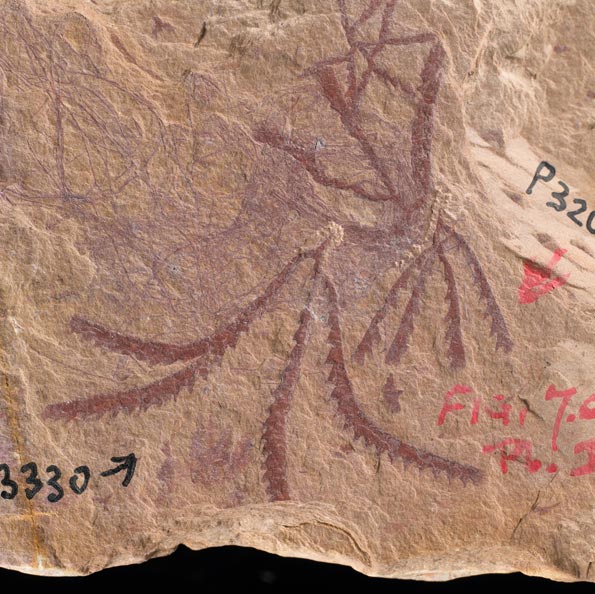 Graptolite fossils - item 1
Graptolite fossils - item 1
TLF ID R6884
This is a colour photograph of graptolites fossilised in rock. These are specimens of 'Pendeograptus fruticosus'. The figures visible on the rock are cataloguing numbers.
